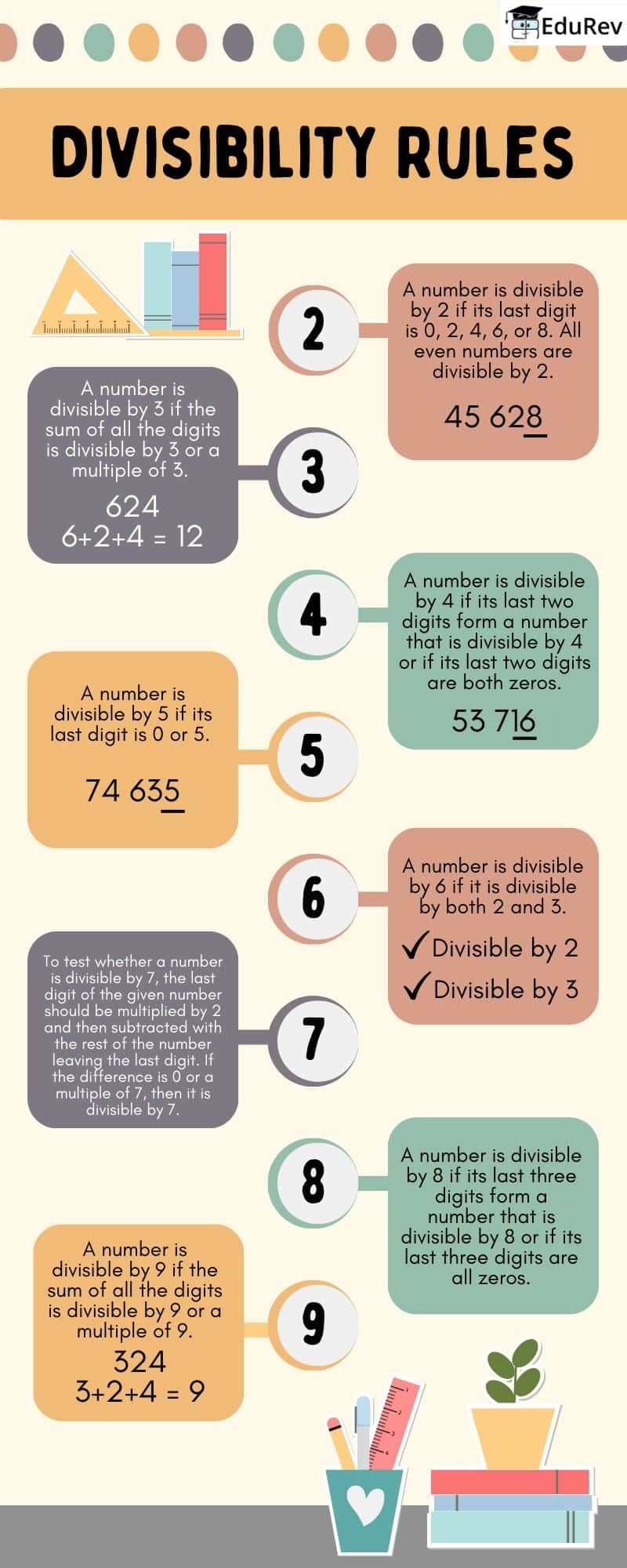Class 6 Exam > Class 6 Notes > Mathematics for Class 6 > Learning Poster: Divisibility Rules
Learning Poster: Divisibility Rules | Mathematics for Class 6 PDF Download

The document Learning Poster: Divisibility Rules | Mathematics for Class 6 is a part of the Class 6 Course Mathematics for Class 6.
All you need of Class 6 at this link: Class 6
|
48 videos|334 docs|23 tests
|
FAQs on Learning Poster: Divisibility Rules - Mathematics for Class 6
| 1. What are the basic divisibility rules for numbers? |  |
Ans. The basic divisibility rules are as follows:
- A number is divisible by 2 if its last digit is even (0, 2, 4, 6, or 8).
- A number is divisible by 3 if the sum of its digits is divisible by 3.
- A number is divisible by 5 if it ends in 0 or 5.
- A number is divisible by 10 if it ends in 0.
- A number is divisible by 4 if the last two digits form a number that is divisible by 4.
| 2. How can I determine if a number is divisible by 6? |  |
Ans. A number is divisible by 6 if it meets two conditions: it must be divisible by 2 and by 3. This means that the last digit must be even (for divisibility by 2), and the sum of its digits must be divisible by 3 (for divisibility by 3).
| 3. Why is it important to know divisibility rules? |  |
Ans. Knowing divisibility rules is important because they help simplify mathematical calculations, particularly in factoring, finding common multiples, and solving problems that involve fractions. They also aid in quickly determining whether a number is prime or composite.
| 4. Can you provide examples of numbers that are divisible by 9? |  |
Ans. A number is divisible by 9 if the sum of its digits is divisible by 9. For example, the number 81 is divisible by 9 because 8 + 1 = 9. Similarly, 729 is divisible by 9 since 7 + 2 + 9 = 18, which is also divisible by 9.
| 5. How can I apply divisibility rules in everyday situations? |  |
Ans. Divisibility rules can be applied in everyday situations like budgeting, cooking measurements, or organizing items. For instance, if you want to divide a batch of cookies into equal groups, knowing divisibility rules can help you determine how many groups can be made without leftovers.
Related Searches
















